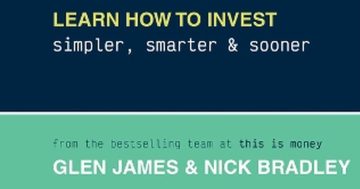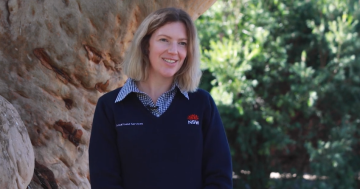Philip Brewer* says investment need not be complicated as mediocre returns are all you need to save for a house, send your kids to university and fund your retirement.
 Mediocre financial advice can earn you mediocre investment returns — and mediocre investment returns are all you need to save for a house, send your kids to university, and fund your retirement.
Mediocre financial advice can earn you mediocre investment returns — and mediocre investment returns are all you need to save for a house, send your kids to university, and fund your retirement.
Mediocre investment advice is pretty straightforward.
In fact, the only thing that’s complicated is the stuff that comes before investing: earning money, keeping your debt in check, finding a career, living frugally, and most crucially, building an adequate emergency fund.
Once you’ve got those things taken care of, you’re ready to start investing.
If you’re at that point, here’s my mediocre investment advice: create a diversified portfolio of low-cost investments and rebalance it annually.
Diversified portfolio
It’s important to have diversity at several levels.
Eventually you’ll want diversity in investment types — not just stocks, but also bonds, real estate, precious metals, foreign currency, cash, etc.
More importantly, don’t let your portfolio get concentrated in just one or a few companies.
In the medium term — after you’ve got a well-diversified stock selection, but before it’s time to branch out into more exotic investments — you’ll want to expand the diversity of types and sizes of companies.
Diversity wins two ways.
First, it’s safer: as long as all your money isn’t in just one thing, it doesn’t matter so much whether it’s a good year or a bad year for that thing.
Second, it produces higher returns: no one can know which investment will be best, but a diversified portfolio probably has at least some money invested in some investments that will do especially well.
Of course, you don’t want a random selection of investments, even if such a thing might be quite diverse.
You want a reasonably balanced portfolio.
Low-cost investments
The less money you pay in fees and commissions, the more money you have invested in earning a return.
It’s easy to screw this up.
Any investment that’s advertised is paying its advertising budget somehow — probably with fees from investors.
Any investment that’s sold by agents or brokers is paying those agents or brokers somehow — probably with commissions or fees from investors.
All those costs come straight out of your return.
Keep them to a minimum.
Rebalance annually
Your diversified portfolio will immediately start getting less diversified: your winning investments will become a larger fraction of your portfolio while your losers will become a smaller fraction.
In the short term, that’s great.
Pretty soon though, you start losing the advantages of diversification.
Last year’s winners will inevitably become losers eventually, and you don’t want that to happen after they’ve become a huge share of your portfolio.
The solution is to restore the original diversity.
Sell some of the winners, and use the resulting cash to buy some more of the losers.
It’s the easiest possible way to buy low and sell high.
(Maybe you don’t want to buy exactly the losers — not if their poor performance leads you think there’s something really wrong with them. But buy something kind of like them.)
There are costs to rebalancing — costs in time and effort, and actual costs in commissions and fees.
Because of that, you probably wouldn’t want to rebalance constantly.
What goes into a diversified portfolio?
What I’m going to suggest is that you start with a balanced portfolio of stocks and bonds.
My mediocre investment advice then is that your portfolio should be a balance of stocks (for maximum growth) and bonds (for income and stability).
Finding the right balance comes down to age — yours
What’s the right balance? An old rule of thumb was that 100 minus your age would be a good target percentage for the stock portion of your portfolio.
The theory was that a young person can afford to take big risks, because he or she has time to wait for an eventual market rebound (and because during the early phase of building up a portfolio, even a large percentage loss is a small dollar amount).
This makes a certain amount of sense.
In fact, you could argue that a stock market that collapsed and then stayed down just when you started investing would be great — it would give you decades to buy stocks cheap.
That rule of thumb isn’t bad, although with people living longer these days, it probably makes sense to keep a higher portion of stocks in your portfolio during the last years before and first years after retirement.
When you’re just getting started, feel free to keep it very simple.
Perhaps just start putting money into a broad-based stock fund.
You can add a bond fund right away or wait until your annual rebalancing.
There are mutual funds that will manage this balance for you, holding stocks and bonds with a balance that shifts over time to some target date, at which point they’ll hold a portfolio suitable for someone who has retired.
You don’t need them.
In particular, they tend to have higher expenses, violating the “low cost” principle.
You can do it easily enough for yourself.
As an alternative to mutual funds, you can use exchange traded funds or ETFs.
It doesn’t matter.
Once your portfolio of stocks is large, you probably want to move beyond a single fund.
Consider adding a fund that includes foreign stocks (especially if the dollar seems strong at the time you’ll be buying).
Or a fund that includes dividend-paying stocks (especially if interest rates are low relative to dividends).
Follow these mediocre tips, and you’ll be racking up mediocre returns in no time!
And remember — mediocre returns are all you need to live well and retire well.
* Philip Brewer is a senior writer for Wise Bread. He tweets at @philipbrewer and his website is philipbrewer.net.
This article first appeared at www.wisebread.com.











